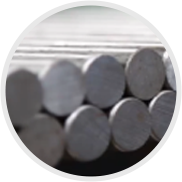 Afrikaans
Afrikaans  Albanian
Albanian  Amharic
Amharic  Arabic
Arabic  Armenian
Armenian  Azerbaijani
Azerbaijani  Basque
Basque  Belarusian
Belarusian  Bengali
Bengali  Bosnian
Bosnian  Bulgarian
Bulgarian  Catalan
Catalan  Cebuano
Cebuano  Corsican
Corsican  Croatian
Croatian  Czech
Czech  Danish
Danish  Dutch
Dutch  English
English  Esperanto
Esperanto  Estonian
Estonian  Finnish
Finnish  French
French  Frisian
Frisian  Galician
Galician  Georgian
Georgian  German
German  Greek
Greek  Gujarati
Gujarati  Haitian Creole
Haitian Creole  hausa
hausa  hawaiian
hawaiian  Hebrew
Hebrew  Hindi
Hindi  Miao
Miao  Hungarian
Hungarian  Icelandic
Icelandic  igbo
igbo  Indonesian
Indonesian  irish
irish  Italian
Italian  Japanese
Japanese  Javanese
Javanese  Kannada
Kannada  kazakh
kazakh  Khmer
Khmer  Rwandese
Rwandese  Korean
Korean  Kurdish
Kurdish  Kyrgyz
Kyrgyz  Lao
Lao  Latin
Latin  Latvian
Latvian  Lithuanian
Lithuanian  Luxembourgish
Luxembourgish  Macedonian
Macedonian  Malgashi
Malgashi  Malay
Malay  Malayalam
Malayalam  Maltese
Maltese  Maori
Maori  Marathi
Marathi  Mongolian
Mongolian  Myanmar
Myanmar  Nepali
Nepali  Norwegian
Norwegian  Norwegian
Norwegian  Occitan
Occitan  Pashto
Pashto  Persian
Persian  Polish
Polish  Portuguese
Portuguese  Punjabi
Punjabi  Romanian
Romanian  Russian
Russian  Samoan
Samoan  Scottish Gaelic
Scottish Gaelic  Serbian
Serbian  Sesotho
Sesotho  Shona
Shona  Sindhi
Sindhi  Sinhala
Sinhala  Slovak
Slovak  Slovenian
Slovenian  Somali
Somali  Spanish
Spanish  Sundanese
Sundanese  Swahili
Swahili  Swedish
Swedish  Tagalog
Tagalog  Tajik
Tajik  Tamil
Tamil  Tatar
Tatar  Telugu
Telugu  Thai
Thai  Turkish
Turkish  Turkmen
Turkmen  Ukrainian
Ukrainian  Urdu
Urdu  Uighur
Uighur  Uzbek
Uzbek  Vietnamese
Vietnamese  Welsh
Welsh  Bantu
Bantu  Yiddish
Yiddish  Yoruba
Yoruba  Zulu
Zulu belt conveyor troughing idlers
The Role of Troughing Idlers in Belt Conveyors
Belt conveyors are an indispensable component in various industries, facilitating the efficient movement of materials from one point to another. Among the critical components of a belt conveyor system, troughing idlers play a significant role in maintaining the functionality and stability of the conveyor belt. This article explores the design, function, and benefits of troughing idlers in belt conveyor systems, shedding light on their vital contribution to material handling processes.
Understanding Troughing Idlers
Troughing idlers are designed to support the conveyor belt while allowing it to carry materials efficiently. They typically consist of a series of rollers arranged in a trough shape, which helps keep the belt centered and reduces the risk of spillage. The troughing angle can vary depending on the application and the materials being transported, but common configurations include 20-degree, 35-degree, and 45-degree angles. The choice of angle impacts the volume of material that can be carried and the overall stability of the belt.
Functionality of Troughing Idlers
The primary functionality of troughing idlers is to support the conveyor belt and the load it carries. By maintaining a trough shape, these idlers help to prevent the materials from falling off the edges of the belt, which can lead to inefficiencies and potential safety hazards. The design of troughing idlers also reduces the friction between the belt and the idlers, minimizing wear and tear on the system.
In addition to supporting the belt, troughing idlers assist in the alignment of the conveyor belt. Misalignment can lead to excessive wear on the belt and cause operational disruptions. Troughing idlers help guide the belt, ensuring it runs smoothly along the conveyor system. Furthermore, they contribute to the belt's ability to handle varying loads, making them versatile components in various material handling applications.
Benefits of Using Troughing Idlers
belt conveyor troughing idlers

1. Enhanced Material Handling By containing materials within the trough, idlers reduce the risk of spills and loss of product, ensuring that the conveyor operates at maximum efficiency.
2. Reduced Wear and Tear The design of troughing idlers minimizes friction, leading to decreased wear on both the conveyor belt and the idlers themselves. This reduction in wear results in lower maintenance costs and extended equipment life.
3. Stability and Support Troughing idlers provide stability to the belt during operation. Their design helps to support heavier loads without causing sagging or misalignment, which can be detrimental to the system's performance.
4. Versatility Troughing idlers can be customized to accommodate various materials and load sizes. This adaptability makes them suitable for use in a wide range of industries, including mining, agriculture, and manufacturing.
5. Improved Safety By minimizing the risk of material spillage, troughing idlers contribute to a safer working environment. This is particularly important in industrial settings where spills can pose hazards to personnel and equipment.
Conclusion
Troughing idlers are essential components of belt conveyor systems, playing a pivotal role in supporting the conveyor belt and ensuring efficient material handling. Their design provides many benefits, including enhanced operational efficiency, reduced wear and tear, and improved safety. As industries continue to rely on conveyor systems for material transport, the importance of troughing idlers cannot be overstated. Investing in high-quality troughing idlers is crucial for any operation seeking to optimize its material handling processes and ensure long-term success.
-
Revolutionizing Conveyor Reliability with Advanced Rubber Lagging PulleysNewsJul.22,2025
-
Powering Precision and Durability with Expert Manufacturers of Conveyor ComponentsNewsJul.22,2025
-
Optimizing Conveyor Systems with Advanced Conveyor AccessoriesNewsJul.22,2025
-
Maximize Conveyor Efficiency with Quality Conveyor Idler PulleysNewsJul.22,2025
-
Future-Proof Your Conveyor System with High-Performance Polyurethane RollerNewsJul.22,2025
-
Driving Efficiency Forward with Quality Idlers and RollersNewsJul.22,2025





























